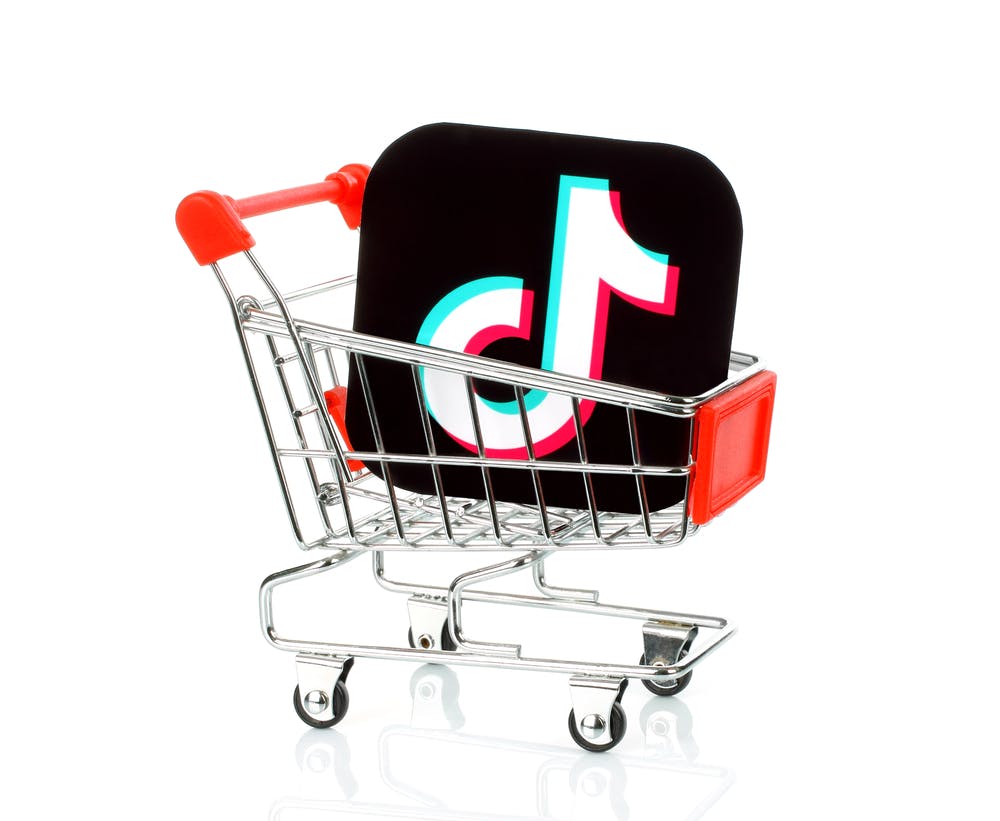
If the future of ecommerce on TikTok looks anything like Douyin, it will be a completely different phenomenon to the social commerce we know on Instagram, Facebook and platforms like them – but potentially a huge hit with an online generation for whom mobile-first, creative and social content is already second nature.
The growth of influencer marketing and advertising on TikTok has demonstrated the platform’s real potential for monetisation, but there is much more that can be done to tap into the selling power of TikTok’s platform and its highly-engaged userbase. TikTok’s parent company ByteDance knows this, which is why it is in the process of rolling out ecommerce features on TikTok.
Ever since TikTok began testing shoppable links within user bios and posts in late 2019, it has always been a matter of time before the short-video platform rolled out fully-fledged ecommerce features.
Social Quarterly: Q3 2021
Douyin and ‘interest ecommerce’
Let’s take a look at what ByteDance did with Douyin in China.
Combine this content with an algorithm that is personalised to every user’s individual interests, and it becomes easy to see why interest ecommerce could be such a powerful proposition.
Douyin is banking its ecommerce success on something it calls ‘interest ecommerce’, a concept that President of Ecommerce Kang Zeyu outlined in a keynote speech at Douyin Ecommerce’s first ‘Ecosystem Conference’ in Guangzhou in April. According to Kang, ‘interest ecommerce’ “aim[s] to satisfy consumers’ implicit needs while improving their life quality”, using interest-based recommendation algorithms like the notoriously powerful tech that drives content recommendations on Douyin – and TikTok – to bring together “people, goods and platforms”.
“Unlike Instagram, where fashion content tends to be highly filtered and aspirational, fashion on TikTok is rooted in unfiltered reality. This is largely because the majority of content is created by regular users, and TikTok is overall seen as a platform for authentic creative expression. [As a result], fashion content on TikTok tends to be more accessible and ultimately more influential.”
Douyin first started testing the waters of ecommerce in March 2018, when it rolled out a feature that allowed followers of creators with more than 100 million fans to buy products from Alibaba’s Taobao and Tmall shopping platforms. The following year, Douyin introduced a shopping cart feature in time for 618, China’s second-largest annual shopping festival, and made access to JD.com and other ecommerce platforms available through its mini-programs.
But there are many indications that ecommerce on TikTok is more likely to resemble Douyin than, say, shopping on Instagram or Facebook. In a recent article for Econsultancy, Nikki Gilliland analysed TikTok’s powerful influence on fashion trends and subsequently fashion purchases, which is due in large part to its interest-based algorithm creating a more egalitarian environment where ordinary users have just as much viral potential as influencers with a large follower base. Gilliland writes,
Kang has predicted that ‘interest ecommerce’ will be a growing phenomenon over the next two years, with a number of players in the ecommerce industry switching to interest ecommerce, and GMV from interest ecommerce exceeding 9.5 trillion RMB (US .46 trillion) by 2023.
It can be argued that the Chinese market is more receptive to this kind of branded content than western markets like the US and Europe, but the figures cited by UNiDAYS and the examples of TikTok-driven fashion trends explored in Gilliland’s article show that TikTok has very real purchasing influence, too. And while Generation Z may have low trust in social commerce at this present moment, TikTok could be the platform that succeeds in rehabilitating its reputation.
What does this mean for the future of shopping on TikTok?
Ecommerce on TikTok is being rolled out into a very different shopping and social media environment to the one in which Douyin has had such success. TikTok is popular across a huge range of countries, of course, and not all of them are the same; but in the United States and Europe, where ecommerce features like TikTok’s Shopify tie-in and in-app shopping have been launched or are being trialled, consumers are much less used to online shopping as an interactive, social experience than their Chinese counterparts, for whom mobile-first social commerce is practically a way of life.
Rather than this boding poorly for the future of ecommerce on TikTok, however, I think it merely underscores the need for brands to understand the platform, and not assume that simply because their videos are shoppable that they will drive sales.
These inspiration-based purchases are at the heart of what is sometimes called ‘shoppertainment’ in China: a blend of commerce and informative, entertaining content. Shoppable videos and livestreams in China don’t just hawk products: they show consumers how to get the most out of the product in question, giving demonstrations and close-up views, and answering shoppers’ questions in real-time.
While this might sound like just another variation on product recommendations, what has made Douyin so successful is its combination of entertaining content with personalisation – after all, the algorithm has to have something to recommend. This means that it’s important not to overlook the role played by content in Douyin’s ecommerce proposition. As Elena Gatti, Managing Director Europe at China ecommerce consultancy Azoya, told Vogue Business, “Douyin is a pure internet content company, it doesn’t have any of the hard features of ecommerce. If you are on Douyin, you purchase because you are inspired.”
How does the ecommerce experience in China differ from the west?
Fast-forward to 2021, and Douyin has a dedicated ecommerce business unit, has launched flagship stores for brand accounts, and has even created a payments arm, Douyin Pay, to close the loop on its ecommerce operation. Douyin has reportedly set a goal of more than one thousand brands creating storefronts this year, with the company predicting that gross merchandise value (GMV) in 2021 may be as much as 600 billion RMB (92.38 billion US dollars).
And while ecommerce on TikTok will naturally look different to ecommerce on Douyin due to its being a separate platform with its own trends and cultural touchpoints, brands could do worse than to take a leaf from the Chinese playbook when it comes to making shoppable content entertaining and engaging. Douyin has a number of notable examples of brands leaning into its unique features to create memorable campaigns, from Pizza Hut creating branded stickers for users to accessorize their videos, to Adidas Neo partnering with local celebrities to create native content featuring branded accessories, to Oreo combining in-app ads encouraging users to send branded New Year’s greetings with influencer-created content showing them taking part in the campaign.
TikTok has experienced phenomenal growth since its launch in September 2017, topping free app download charts in a number of countries just months later. In April 2020, it reached the two billion download mark, spurred on by a surge in activity brought about by Covid-19 lockdowns, and last June it (together with Douyin) became the first non-Facebook-owned app to reach three billion installs. TikTok’s clout is undeniable, influencing everything from music hits to fashion trends.
Gilliland spoke to Viviane Paxinos, General Manager at student network UNiDAYS, whose study of 20 million Gen Z student users on TikTok found that 49% of respondents’ fashion purchases were influenced by the brands they saw on social media. However, Paxinos also sounded a note of caution: according to the study, 75% of Generation Z users do not trust shopping conducted directly through social media. “How [Gen Z] consume culture and advertising is often at odds,” Paxinos said. “When one platform loses its appeal because of too much advertising and brand messaging, they switch to another.”





![Everything You Need To Know About Walmart’s Demand-Side Platform (DSP) [in Partnership with The Trade Desk]](https://research-institute.org/wp-content/uploads/2021/04/what-to-know-before-you-sell-your-small-business-768x432.png)
![[Announcement] Convert Experiments Makes CDN 25% Faster](https://research-institute.org/wp-content/uploads/2022/09/announcement-convert-experiments-makes-cdn-25-faster-768x530.png)